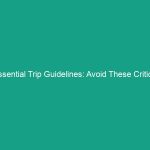Introduction
Good morning team,
Today, we’re going to discuss a critical Safety topic: Essential Guidelines to Avoid Rebar and Impalement Hazards on Site. Understanding these guidelines is vital for ensuring not only your Safety but the safety of those around you. Rebar and impalement Hazards are prevalent on construction sites, and they can lead to severe injuries or even fatalities if not managed properly. Let’s dive into why this topic is so important and what we can do to mitigate these risks.
Understanding Rebar and Impalement Hazards
Rebar, short for reinforcing bar, is a steel bar used to reinforce concrete. While it is crucial for structural integrity, it poses significant risks if left exposed. Impalement hazards occur when sharp objects like rebar are left protruding, creating a danger for workers:
- Definition: Impalement hazards refer to risks of injury from sharp protruding objects.
- Importance: Recognizing and addressing these hazards is essential to prevent serious injuries.
Many workers may underestimate the danger of exposed rebar, thinking it’s just a minor inconvenience. However, these misconceptions can lead to critical injuries. Awareness is the first step toward ensuring safety on site.
Key Hazards, Risks, and Safety Considerations
Let’s identify some specific hazards associated with exposed rebar and impalement risks:
- Exposed Rebar: When rebar is left sticking out, it poses a serious risk for impalement.
- Trip Hazards: Loose rebar can act as a tripping hazard, leading to falls and injuries.
- Improper Use of Safety Gear: Failure to use appropriate Personal Protective Equipment (PPE) increases the risk of injury.
Ignoring these hazards can result in severe consequences, including permanent disability or loss of life. It’s crucial to remain vigilant and proactive in our safety practices.
Best Practices, Procedures, & Actionable Advice
Now that we understand the risks, let’s discuss some Best Practices to avoid rebar and impalement hazards:
1. Cover Exposed Rebar
Always cover exposed rebar with protective caps or barriers. This simple measure can prevent impalement injuries.
2. Use Appropriate PPE
Ensure you’re wearing the correct Personal Protective Equipment, such as:
- Hard hats
- Steel-toed boots
- Cut-resistant gloves
3. Keep Work Areas Clean
Maintain a clean work Environment. Remove any loose rebar and debris to minimize trip hazards. Regular site inspections should include checking for potential hazards.
4. Training and Awareness
Participate in regular safety Training sessions. Awareness of rebar hazards should be part of our safety culture. Share experiences and discuss safety practices during Toolbox Talks.
5. Incident Reporting
If you encounter a hazard, report it immediately. Timely reporting can prevent accidents before they happen.
Case Study: Real-World Incident
Consider a past incident where an employee tripped over exposed rebar, resulting in significant injuries. This situation highlights the importance of our Safety Measures. By following the guidelines, we can reduce the likelihood of such incidents occurring in the future.
Regulations, Standards, and Compliance
Familiarize yourself with relevant safety Regulations, including:
- OSHA Standards related to construction safety
- Local safety regulations
- Your company’s safety policies
Compliance with these standards is not just about following rules; it’s about protecting yourself and your colleagues. Non-compliance can lead to serious legal and financial consequences for both employees and the company.
Employee Engagement & Discussion
Now, let’s open the floor to discussion. Here are a few questions to consider:
- What safety challenges have you encountered related to rebar hazards?
- Have you noticed any improvements in our safety practices recently?
- What additional measures do you think we could implement to enhance safety?
Your input is valuable. Sharing experiences can lead to better safety practices and a stronger safety culture.
Conclusion & Key Takeaways
To summarize, we’ve discussed essential guidelines to avoid rebar and impalement hazards on site. Key takeaways include:
- Cover exposed rebar and maintain a clean work environment.
- Use appropriate PPE and participate in safety training.
- Report hazards immediately and engage in discussions about safety.
Remember, safety is a shared responsibility. Thank you for your attention and commitment to keeping our work environment safe. Let’s prioritize safety and look out for one another as we continue our work today!


